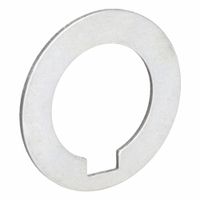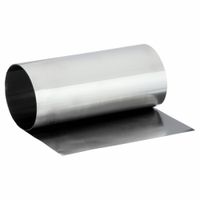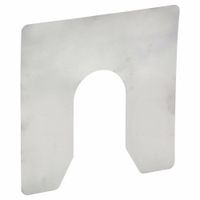Call +(254) 703 030 000 / 751 483 999 / 721 704 777
.....Read More
Frequently Asked Questions
What are shims used for?
Please provide more information about what you would like me to answer.
How do you choose the right shim thickness?
Choosing the right shim thickness is crucial for achieving proper alignment, reducing wear, and optimizing performance in various mechanical applications. The ideal thickness depends on several factors, primarily the specific gap you need to fill and the desired preload or clearance.
First, accurate measurement of the gap is paramount. This can be done using feeler gauges, calipers, or micrometers. Account for any potential deflections or deformations under load, as these can affect the required shim thickness.
Next, consider the function of the shim. Is it for precise alignment to prevent vibration and premature wear? Or is it to achieve a specific bearing preload, crucial for smooth operation and longevity? The application dictates the tolerance for shim thickness; high-precision applications demand tighter tolerances.
Material choice also plays a role. Shims come in various materials like stainless steel, brass, and plastic, each with different compressive strengths and environmental resistances. The shim's material should be compatible with the surrounding components and withstand the operating conditions.
Finally, iterative fitting and testing may be necessary. It's often better to start with a slightly thicker shim and progressively reduce its thickness until the desired fit, alignment, or preload is achieved. This ensures that you don't over-compress components or introduce unwanted stresses.
What materials are shims made from?
Shims are thin, often tapered or wedge-shaped pieces of material used to fill small gaps or spaces between objects. They are employed for various purposes, including leveling, alignment, spacing, or providing support. The materials used for shims vary widely depending on the application's specific requirements, such as load-bearing capacity, corrosion resistance, temperature tolerance, and desired rigidity.
Common materials for shims include: * Metal: Steel (carbon steel, stainless steel), brass, aluminum, and copper are frequently used for their strength, durability, and precision. Metal shims are ideal for heavy-duty applications, machinery alignment, and structural support.
* Plastic: Various plastics like nylon, PVC, polypropylene, and ABS are popular for their non-corrosive properties, electrical insulation, and lightweight nature. Plastic shims are often found in plumbing, window and door installations, and applications where metal-to-metal contact needs to be avoided.
* Wood: Hardwood or plywood shims are traditional choices for construction and carpentry. They are easy to cut and adjust, making them suitable for leveling floors, framing, and general shimming tasks.
* Composite Materials: Some specialized shims are made from composite materials, offering a balance of strength, lightweight properties, and resistance to certain chemicals or environmental factors.
* Rubber/Elastomers: For vibration damping, sealing, or slight flexibility, shims made from rubber or other elastomeric materials might be used.The selection of shim material is critical to ensure proper function and longevity in its intended application.
How do you install shims correctly?
Installing shims correctly is crucial for achieving a level and stable surface, especially in construction or furniture assembly. Shims are thin, wedge-shaped pieces of material, often wood, plastic, or metal, used to fill small gaps or adjust alignment.
To install shims correctly, first, identify the area that needs leveling or stabilization. Place the shim into the gap, ensuring it's snug but not forced. If using multiple shims, layer them to achieve the desired thickness, alternating their direction to create a more stable base. For example, if shimming a door frame, place shims near hinge locations and latch points. For furniture, shims are often placed under legs.
Once the shim is in place, check for levelness using a spirit level. Adjust the shim's position or add more shims until the surface is perfectly level. For wood shims, you may need to tap them gently with a hammer. If the shim protrudes, you can trim off any excess with a utility knife or saw once the installation is complete and stable. It's important to use shims appropriate for the material and weight they will support to ensure long-term stability and prevent future issues.
What is the difference between round shims and arbor shims?
Round shims are typically flat, circular pieces of material used to fill small gaps or adjust the spacing between components. They are commonly used for leveling, alignment, or to reduce friction. Arbor shims, on the other hand, are specifically designed to fit around an arbor, which is a rotating shaft used to hold cutting tools or workpieces. They are often used in machining operations to adjust the axial position of cutters or to compensate for wear in the machine's components. While both types of shims serve to create precise spacing, their shapes and primary applications differ based on the components they interact with.
How do slotted shims work in assemblies?
Slotted shims are thin, U-shaped pieces of material, often metal, designed to adjust the spacing or alignment between components in an assembly. The "slot" allows them to be inserted or removed without fully disassembling the joined parts, which is a significant advantage for maintenance and alignment.
In assemblies, slotted shims are primarily used to compensate for manufacturing tolerances, wear, or to achieve precise alignment. For example, in rotating machinery, they can be placed under motor feet to ensure proper shaft alignment with pumps or gearboxes, preventing vibration and premature bearing failure. The slots allow for easy installation around bolts or studs that are already in place, simplifying the adjustment process. By stacking different thicknesses of shims, technicians can achieve the exact desired height or offset, optimizing the performance and lifespan of the machinery.
What are the benefits of using shim stock?
Shim stock offers several benefits in various applications due to its precise thickness and material properties. One key advantage is its use in achieving precise alignment and spacing between components. By inserting shims of specific thicknesses, engineers and technicians can accurately adjust gaps, ensuring optimal performance and reducing wear in machinery.
Another significant benefit is its role in vibration dampening and noise reduction. Shims made from certain materials can absorb vibrations, preventing them from transferring between parts and thus reducing noise levels and improving the lifespan of equipment.
Shim stock is also invaluable for leveling uneven surfaces. In manufacturing and construction, shims can be used to compensate for irregularities, creating a flat and stable base for assemblies or structures. This is crucial for maintaining structural integrity and operational efficiency.
Furthermore, shims can be used for wear compensation. As parts wear down over time, shims can be added or adjusted to maintain the correct tolerances, extending the life of expensive components and reducing the need for costly replacements.
Finally, shim stock is available in a wide range of materials, including stainless steel, brass, and plastic, each offering specific benefits like corrosion resistance, conductivity, or flexibility, making it adaptable to diverse environmental and operational requirements.
How do wedge shims provide stability?
Wedge shims provide stability by creating a tight, supporting fit between two surfaces that might otherwise have a gap or be uneven. They work on the principle of a simple machine – the wedge – converting a small input force into a large perpendicular force that can lift, separate, or secure objects. When inserted into a gap, the tapered design of the shim allows it to be driven in, gradually increasing pressure and filling the void. This pressure creates a firm, stable connection by distributing the load and preventing movement or wobbling. For instance, in construction, shims are used to level windows, doors, or flooring by filling small inconsistencies in the framing. In carpentry, they can tighten joints, eliminate rocking in furniture, or provide a secure base for installations. The material of the shim (wood, plastic, metal) and its precise taper are chosen based on the application to ensure optimal load bearing and stability.
Can shims be reused?
Generally, it is not recommended to reuse shims. Shims are designed for specific applications and are often made of materials that can deform or compress over time. Reusing them can lead to improper alignment, compromised structural integrity, or a lack of stability in the application. Additionally, shims can accumulate wear and tear, dirt, or debris, which can further affect their performance upon reuse. For critical applications, always use new shims to ensure the best possible results and maintain safety standards.
What are common applications for shims in machinery?
Shims are thin pieces of material, often metal or plastic, used to fill small gaps or adjust the fit between parts. In machinery, their applications are diverse and crucial for optimal performance, precision, and longevity.
One primary application is for achieving proper alignment. When assembling machinery components, even slight misalignments can lead to increased wear, vibrations, and inefficiency. Shims are strategically placed to correct these deviations, ensuring that shafts, gears, and bearings are perfectly aligned, which in turn reduces friction and extends the lifespan of the equipment.
Another significant use is for adjusting bearing preload. Bearings require a specific amount of force (preload) to function correctly. Too much preload can lead to overheating and premature failure, while too little can result in excessive play and reduced accuracy. Shims allow for precise adjustments to bearing preload, optimizing their performance and durability.
Shims are also vital for setting correct clearances. Many machine parts require specific gaps or clearances to operate freely without binding. For example, in engines, shims might be used to set valve clearances, ensuring proper valve operation. In other applications, they help maintain critical distances between moving parts, preventing contact and wear.
Furthermore, shims are used for leveling machinery. Large machines and industrial equipment need to be perfectly level to distribute weight evenly and prevent structural stress. Shims are placed under the machine's feet or base to compensate for uneven floors, ensuring a stable and level operating platform. This is critical for preventing vibration and maintaining the accuracy of manufacturing processes.
Lastly, shims can be used for vibration dampening and noise reduction. By filling gaps and creating a more rigid assembly, shims can help absorb vibrations and reduce noise generated by machinery, leading to a quieter and safer working environment. In summary, shims are indispensable tools in machinery, enabling precise adjustments for alignment, preload, clearance, leveling, and vibration control, all of which contribute to improved performance, efficiency, and equipment lifespan.




